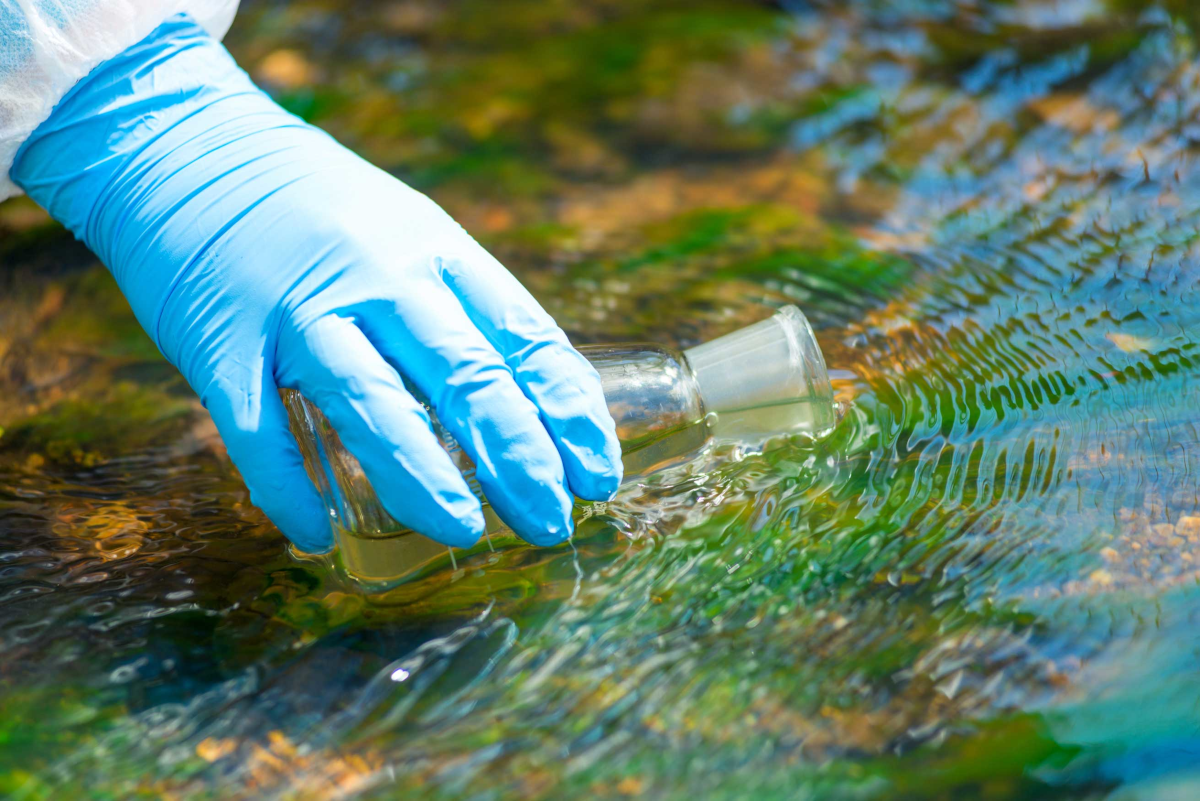
By Dr Calum Preece
Improving the monitoring and mitigation of major pollution trends is one of the most important areas of environmental research. It is widely understood that human activity is having a severe negative impact on natural ecosystems all over the world, and only with greater investment in analysis and remedial action can these issues be addressed.
Nitrogen pollution is one of the best examples of a major environmental issue for which reliable, accessible monitoring is required in order to solve the problem. This is an area that has not always received the same level of attention as higher-profile issues such as carbon emissions, and has historically been held back by the costs and difficulties associated with routine testing and analysis.
However, new innovations are emerging that will make it easier for more labs to easily access the tools and methodologies they need to monitor key nitrogen pollution trends. The availability of such tools is crucial to international efforts to accurately measure and mitigate the impact of this phenomenon, while bringing more attention to the challenges involved in reducing global nitrogen emissions.
The scale of the nitrate pollution problem
Maintaining balance in the global nitrogen cycle plays an essential role in the planet’s key ecological processes. This cycle depends on a healthy balance of nitrogen inputs and outputs, particularly in terms of nitrate; this reactive form of nitrogen is produced through a range of biological and chemical processes, and is required by plants and crops to grow, but human activities may be increasing nitrate production to dangerous levels.
Excessive burning of fossil fuels or overuse of artificial fertilisers to replenish nitrates in the soil may be disrupting the balance of the nitrogen cycle, leading to a number of harmful effects:
- Nitrate leaching – nitrates leach into groundwater supplies from sewer faults and animal waste created by livestock farming, polluting aquifers and drinking wells. If consumed, water with high nitrate content increases the risk of cancer and foetal development problems during pregnancy
- Nitrate runoff – excess nitrate can run off into surface waters, increasing nutrient availability and causing toxic algal blooms and eutrophication. Ultimately, this can lead to hypoxia and vast marine dead zones in coastal areas and at sea
- Nitrous oxide in the atmosphere – Nitrous oxide (N2O) is a potent greenhouse gas with around 300 times more warming potential than CO2. Around 40 per cent of these emissions come from human activity, including agriculture, burning of fossil fuels and industrial processes
According to data from the UN Environment Programme, around 120 million tonnes of reactive nitrogen are created by anthropogenic activities each year. Nearly two-thirds of this nitrogen can be classed as pollution, affecting the air, water, soil, marine and coastal areas, and there is plenty of evidence to suggest that these trends are having damaging consequences:
- Around 200 million pounds of toxic chemicals were dumped into US waterways in 2020, with nitrates accounting for more than 90 per cent
- The European Commission referred Spain to the European Court of Justice for failing to take sufficient action on nitrate pollution, following a report from Greenpeace showing that Spain’s nitrate pollution rates rose by 51.5% from 2016 to 2019
- British Geological Survey data shows that nitrate concentrations in UK groundwater are rising at an average 0.3 mg/l/year, while around 55 per cent of land in England is designated as being at risk from agricultural nitrate pollution
All of these trends demonstrate a clear need for new solutions to bring nitrate pollution back under control. However, the nitrogen cycle is intricate and complex, and the exact impact of anthropogenic inputs on the natural balance is hard to quantify and mitigate without a strong foundation of research and analysis.
What must be done to reduce future nitrate pollution?

There are various methods available for tackling nitrate pollution, which need to be understood and adopted by the relevant policymakers and industrial organisations at scale in order to make a difference. These include:
- Limiting the use of nitrogen fertilisers to specific time periods, and keeping these fertilisers away from steep slopes and water courses to prevent leaching and runoff
- Crop rotations, soil winter cover and catch crops to stop leaching and runoff during wet seasons
- Limits on the total amount of livestock manure applied to land
- Adding nitrification inhibitors to fertilisers
- Using drip fertigation where appropriate
- Switching fuel sources and using catalytic converters to reduce N2O generated by fuel consumption
All of these actions must be supported, measured and informed by a comprehensive approach to testing and analysis. Stable isotope analysis is one of the most important tools in this arsenal, allowing researchers to separate different sources of nitrate and determine what the most significant causes of nitrate pollution might be.
The applications of stable isotope analysis for nitrate analysis are manifold. For example, the method can be used to measure samples at different points along a flowing water source to determine whether the water has the right bacterial and chemical concentrations to clean itself; it can also be used to assess the performance of potential new methods of removing nitrates from groundwater sources manually, such as by using bacterial cultures within a controlled system to consume the nitrate content.
As such, stable isotope analysis is instrumental in helping researchers identify the sources, sinks and cycling of nitrogen throughout terrestrial, atmospheric and marine ecosystems, making it easier to create viable solutions to this pollution problem.
Creating new analytical methods for more accessible testing
Historically, there have been barriers to entry for laboratories looking to invest in nitrate isotope analysis capabilities for the first time, as long-standing difficulties associated with the process have made it impossible for smaller or less well-resourced facilities to contribute to this type of research.
This is because stable isotope analysis of nitrates requires dissolved nitrate samples to be converted to N2O prior to analysis, as it is not possible to analyse nitrate directly using isotope-ratio mass spectrometry (IRMS). This process, which must be free from isotopic fractionation, allows researchers to assess 15N and 18O ratios within the sample and provide insights into its environmental origins.

Traditionally, converting nitrate to N2O requires microbiological sample preparation, which involves the difficult cultivation of special denitrifying bacteria in idealised conditions. Alternatively, labs can use a chemical approach, but this relies on hazardous reagents like cadmium and sodium azide, requiring thorough risk assessments for labs trying to purchase or dispose of these materials.
As a result, researchers have been looking for ways to accelerate and simplify the sample preparation process, which will enable more laboratories to carry out nitrate isotope analysis. A key breakthrough was achieved by researchers Dr Mark Altabet and Dr Leonard Wassenaar, who published a paper in 2019 on a groundbreaking one-step conversion process that uses titanium (III) chloride to reduce dissolved nitrate to N2O gas in septum sample vials.

This method avoids the need for hazardous reagents or maintaining bacterial cultures, with a sample preparation process that takes only a few minutes and produces fully prepared samples within 24 hours. Moreover, the new titanium (III) method can be carried out using basic laboratory infrastructure, meaning that even novice labs are now able to perform high-quality isotopic analysis of nitrates, utilising reagents that are safe to use, easy to dispose of and readily available.
As more laboratories are able to participate in nitrate analysis as a result of this innovation, this will help to quickly grow global understanding of nitrogen pollution trends, bringing the world a step closer to the development of effective long-term solutions. For the time being, nitrate pollution remains a worsening environmental issue that poses a significant danger to the global ecosystem, but by creating more accessible analytical tools and methods, it will become possible to achieve the breakthroughs the world so urgently needs.






